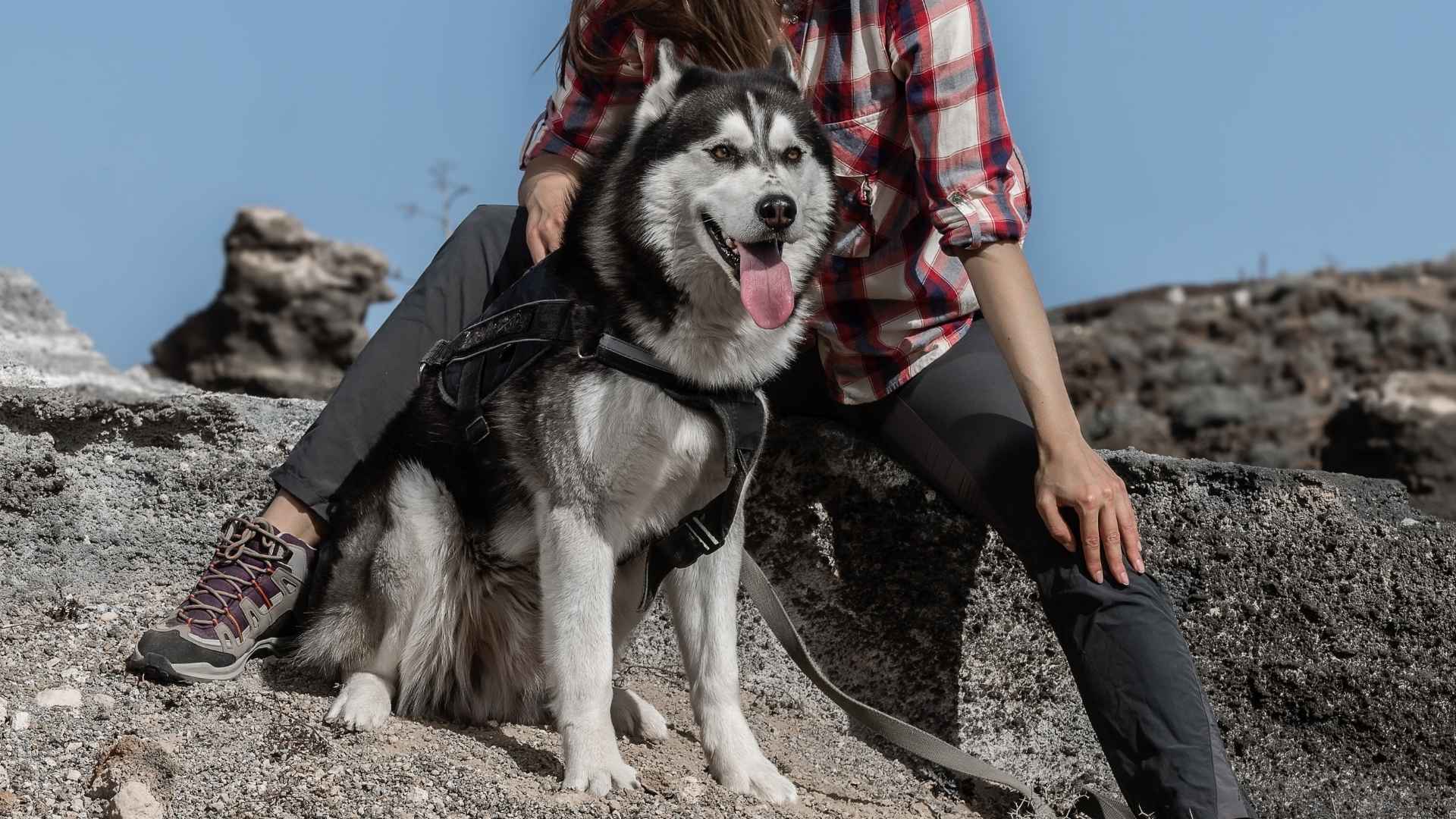For many outdoor lovers, hiking is more than a hobby—it’s a lifestyle that nurtures the body and soul. This invigorating activity not only builds muscle and strengthens cardiovascular health but also offers a chance to disconnect from the digital world and reconnect with nature. And what better way to enjoy this adventure than alongside a loyal four-legged companion?
Dogs make excellent hiking buddies, especially those bred for stamina, agility, and resilience. While not every breed is suited for long trails and steep inclines, certain dogs were practically made for the trail. These breeds thrive on physical challenges, enjoy the great outdoors, and match your active lifestyle step for step. Taking your dog on a hike also provides them with their much-needed physical and mental stimulation, turning every trek into a bonding experience.
Whether you’re trekking through hills, navigating rocky paths, or exploring countryside trails, having the right dog by your side enhances the journey. In this guide, we’ll uncover the best dog breeds that are energetic, dependable, and ready to be your ultimate hiking partner.
Best Dog Breeds For Hiking Enthusiasts
1. German Shorthaired Pointer
The German Shorthaired Pointer, often called GSP, is a medium-sized sporting breed originally developed in 19th-century Germany for hunting both on land and water. According to the AKC, the German Shorthaired Pointer is friendly and intelligent.
Known for their high energy and versatility, GSPs stand 23–25 inches tall and weigh between 55–70 pounds for males, with females slightly smaller.
Their athletic build is complemented by a sleek coat—typically solid liver or liver-and-white patterns—and expressive, intelligent eyes. With noble, well-balanced features and an eagerness to please, these friendly dogs are widely considered one of the most well-rounded active companions.
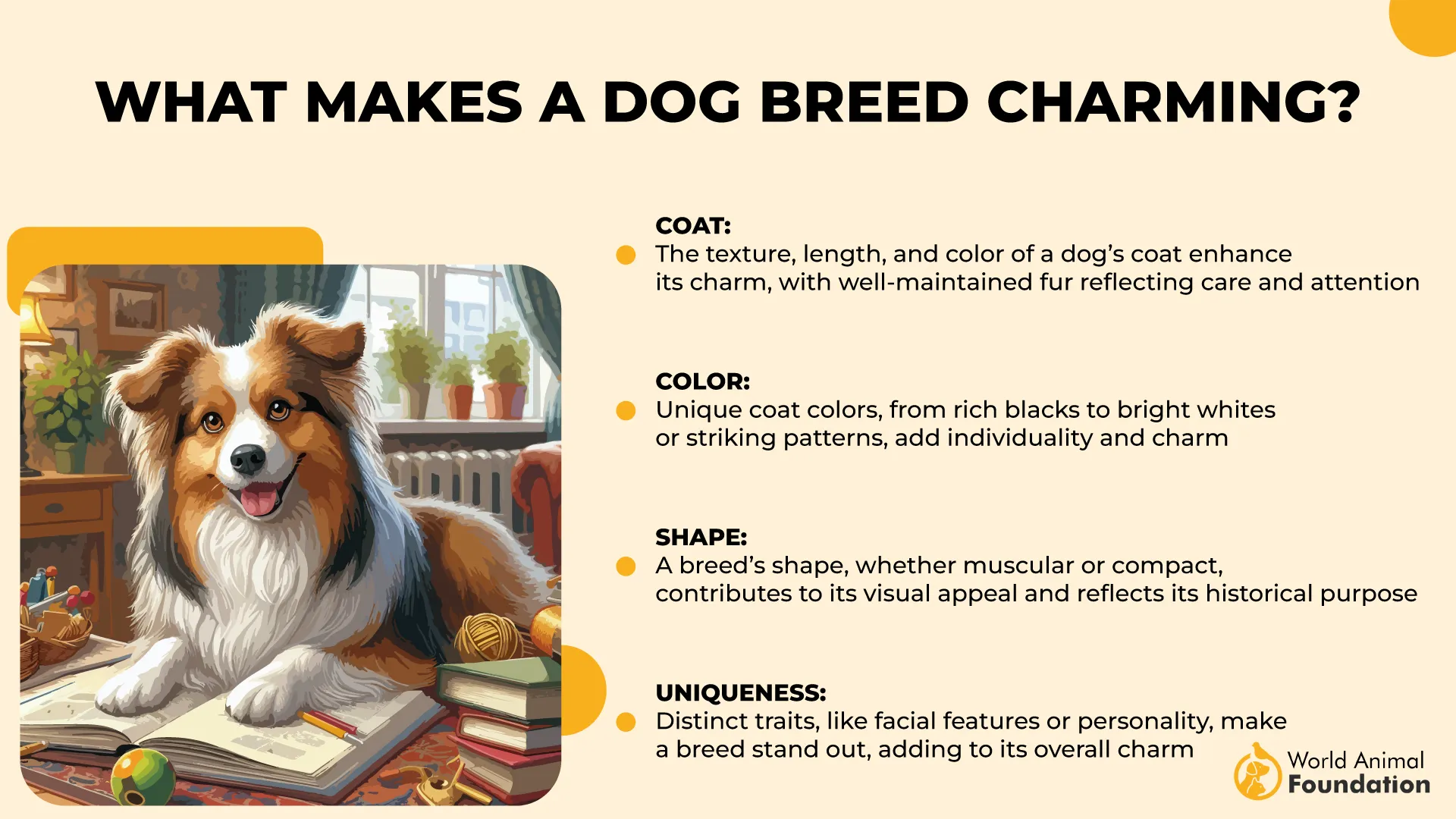
Exercise
GSPs are high-octane athletes requiring at least one to two hours of vigorous activity each day. They are one of the best hiking dogs. Daily hiking or advanced dog sports are perfect outlets for their energy.
They excel in all weather conditions and relish long, physically demanding hikes. Without regular, structured exercise, they may become restless and engage in undesirable behaviors. Their stamina, social nature, and enthusiasm make them ideal for owners who love spending extended time outdoors.
A fun fact: this breed is often dubbed the “perfect pointer” by enthusiasts due to its elegant form and unmatched versatility.
2. Vizsla
The Vizsla, also known as the Hungarian Pointer, is a sleek, athletic breed developed in Hungary for hunting and retrieving. Known for their golden-rust coats and expressive, loving eyes, Vizslas are medium-sized dogs standing 21–24 inches tall and weighing between 45–65 pounds.
They belong to the Sporting Group and are admired for their stamina, elegance, and affectionate temperament. Their roots trace back to ancient Hungarian nobility, where they were cherished as versatile field dogs and close companions.
PetMD states that Hungarian Vizslas are regarded as one of the oldest-known hunting dog breeds. With a lifespan of 12–14 years, these dogs remain loyal, intelligent, and deeply connected to their human families.
Exercise
Bred for long days in the field, this intelligent breed requires consistent physical and mental stimulation. They thrive with at least 30–60 minutes of vigorous daily activity. This can include hiking, agility sports, or extended playtime.
Their energy levels demand commitment, but their eagerness to bond and please makes them a joy to train. If under-stimulated, Vizslas may develop restlessness or destructive behavior, so active owners are best suited for this breed.
Fun Fact: The name “Vizsla” literally means “tracker” or “searcher” in Hungarian, highlighting the breed’s historic hunting role.
3. Australian Cattle Dog
The Australian Cattle Dog, also known as the Blue Heeler, Red Heeler, or Queensland Heeler, is a robust, medium-sized working breed developed in Australia to handle herds across long distances in tough conditions.
Standing 17 to 20 inches tall and weighing between 35 to 50 pounds, this compact herder possesses a muscular build, short weather-resistant coat, and intense focus.
The coat, born white, matures into a blue-gray or red shade with distinctive mottling or speckling. Britannica notes that the Australian Cattle Dog has a thick coat that typically needs only occasional brushing to remove loose hair.
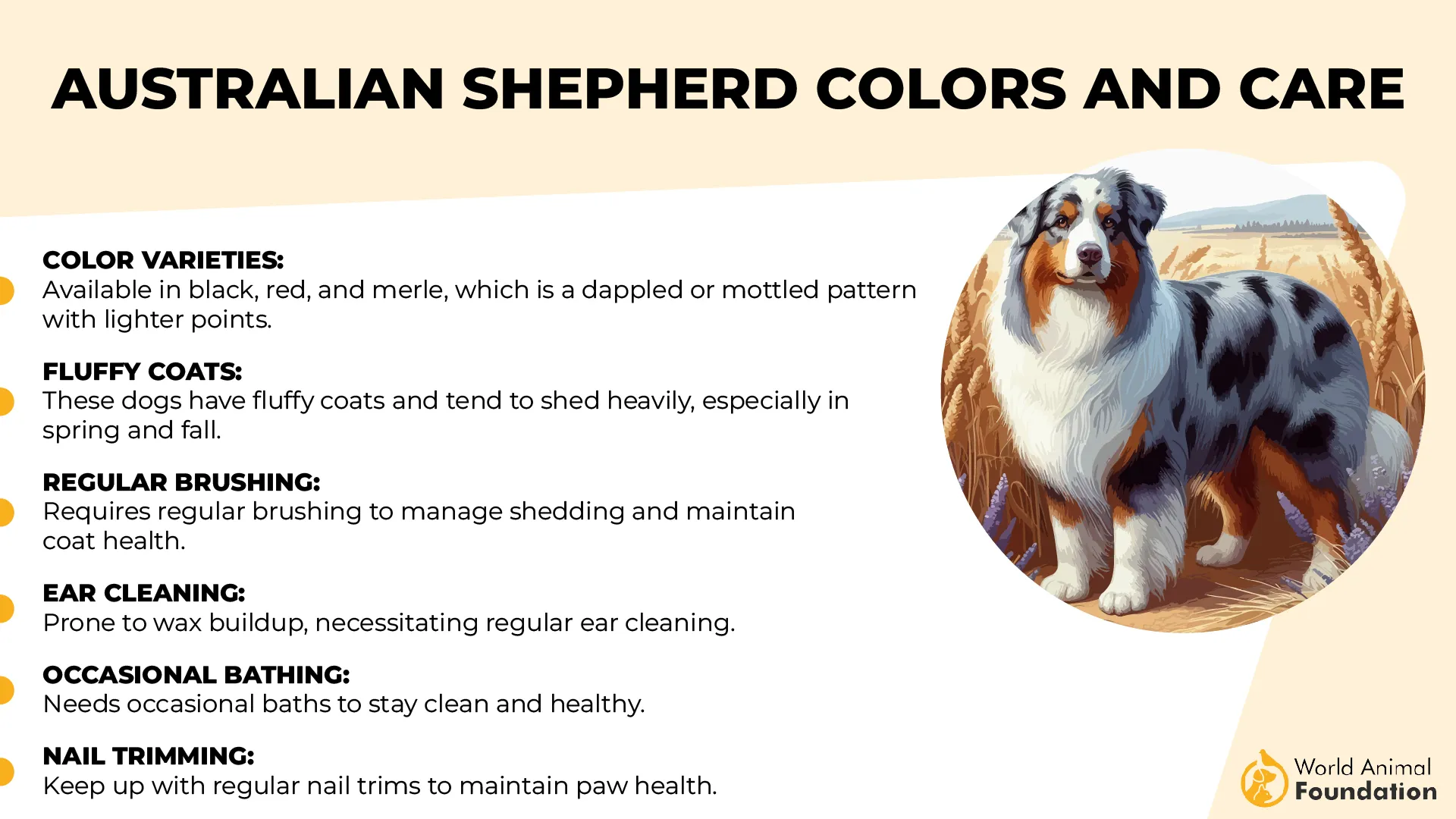
With roots connected to Australia’s Dingo, this breed is fiercely intelligent, famously loyal, and highly agile—traits that make it one of the best hiking partners for those seeking endurance, energy, and alert companionship on the trail.
Exercise
Australian Cattle Dogs thrive on physical exertion and mental challenges. They need more than 2 hours of exercise daily, including vigorous activities like running or advanced training routines. Without enough stimulation, they can become restless and mischievous.
This breed flourishes in homes that offer both space and interactive engagement, making them ideal for active owners and outdoor adventurers.
Fun Fact: The Australian Cattle Dog is born with a white coat that later develops its iconic mottled blue or red coloring.
4. Weimaraner
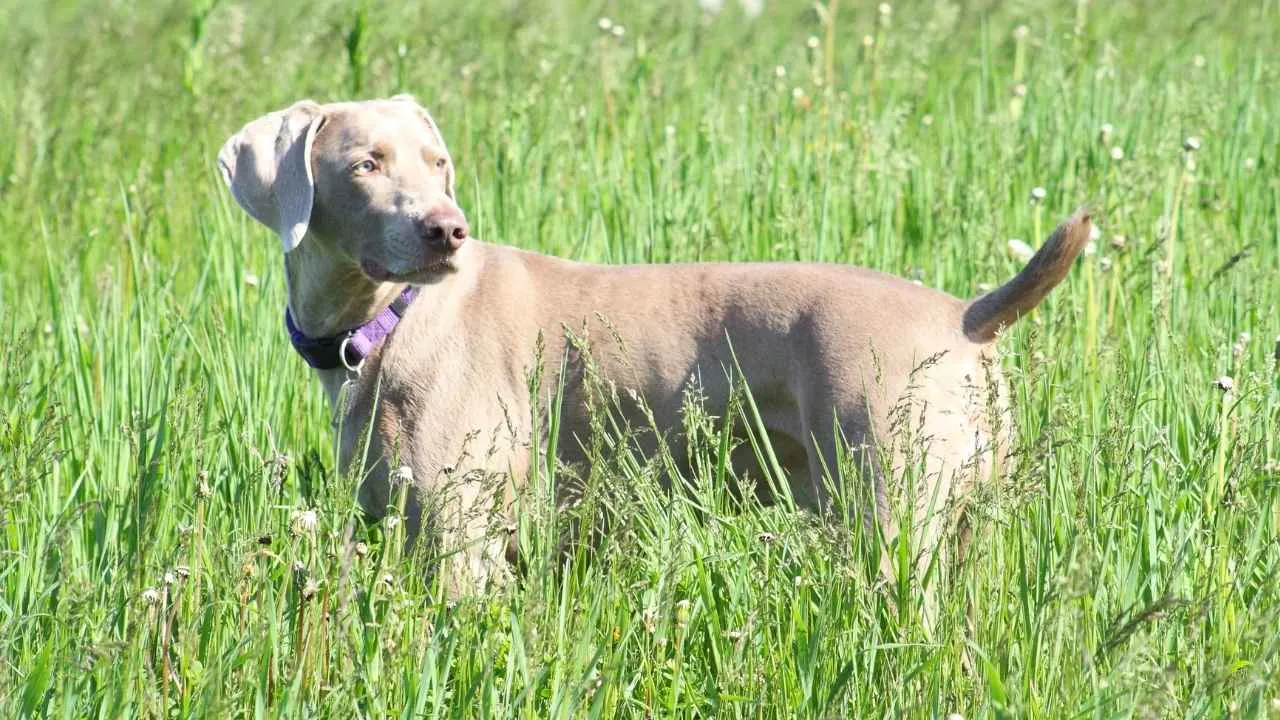
Nicknamed the “Gray Ghost” for its sleek silver-gray coat and graceful presence, the Weimaraner is a German sporting breed originally developed for hunting large game. These medium-to-large dogs are known for their striking appearance, which includes amber or blue-gray eyes, long velvety ears, and a streamlined physique.
Males typically stand 25–27 inches tall and weigh between 70–90 pounds, while females average 23–25 inches in height and 55–75 pounds in weight. Their short, smooth coats require minimal grooming but do shed moderately.
Originally bred to work tirelessly outdoors, these hunting dogs are a perfect match for avid hikers seeking a tireless and loyal companion.
Their agility, strength, and stamina make them suited for both short treks and all-day mountain adventures. Highly affectionate and people-oriented, they thrive on companionship and consistent interaction.
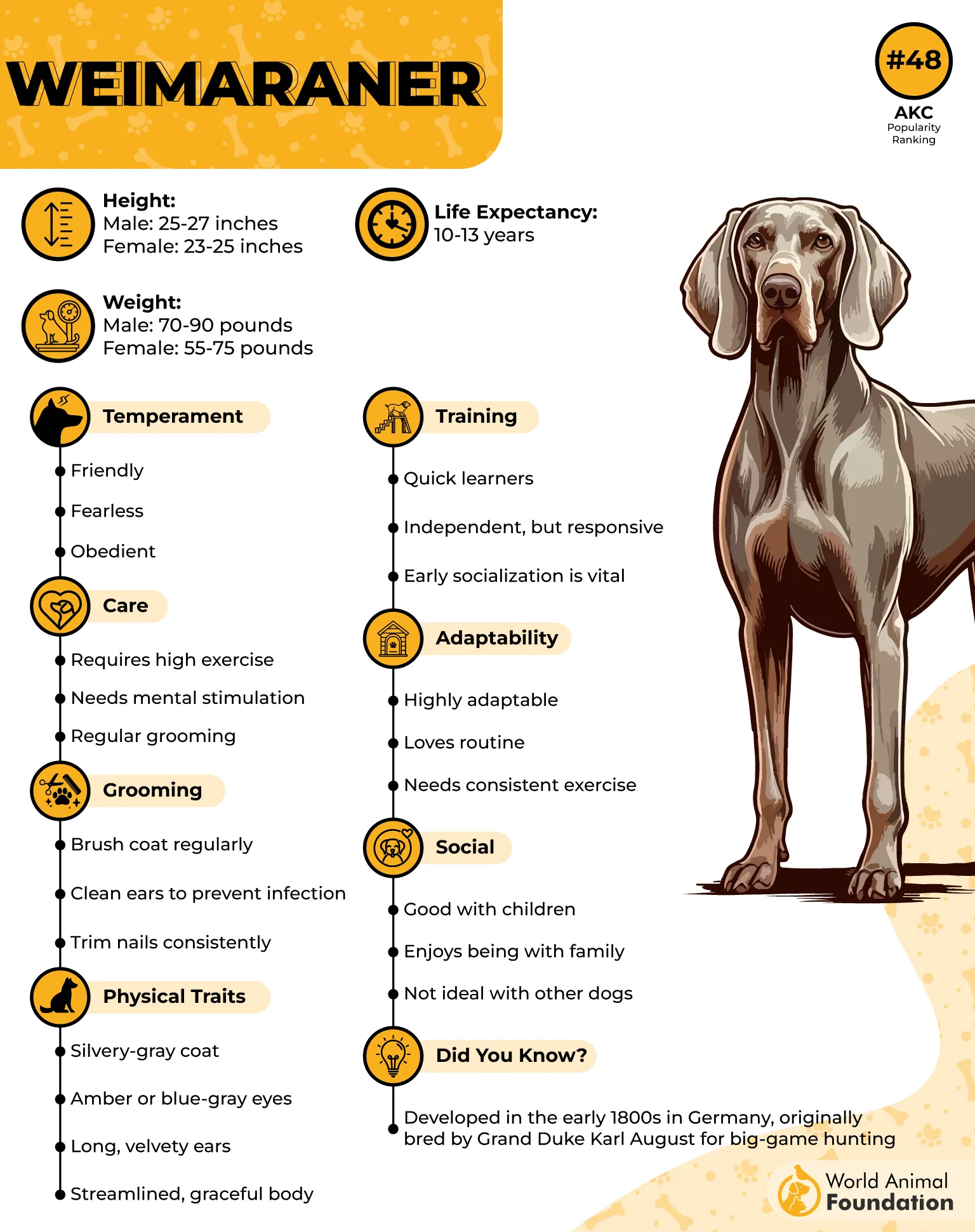
Exercise
Weimaraners require a minimum of two hours of daily physical activity, including off-leash runs in secure areas, long walks, or hikes through diverse terrain.
Mental stimulation is equally important to prevent boredom-related behaviors. Their drive for physical engagement makes them ideal for owners who lead highly active lifestyles.
Fun Fact: These intelligent dogs can be notorious for “counter surfing”—their long limbs and curiosity make unattended snacks easy targets.
5. Bernese Mountain Dog
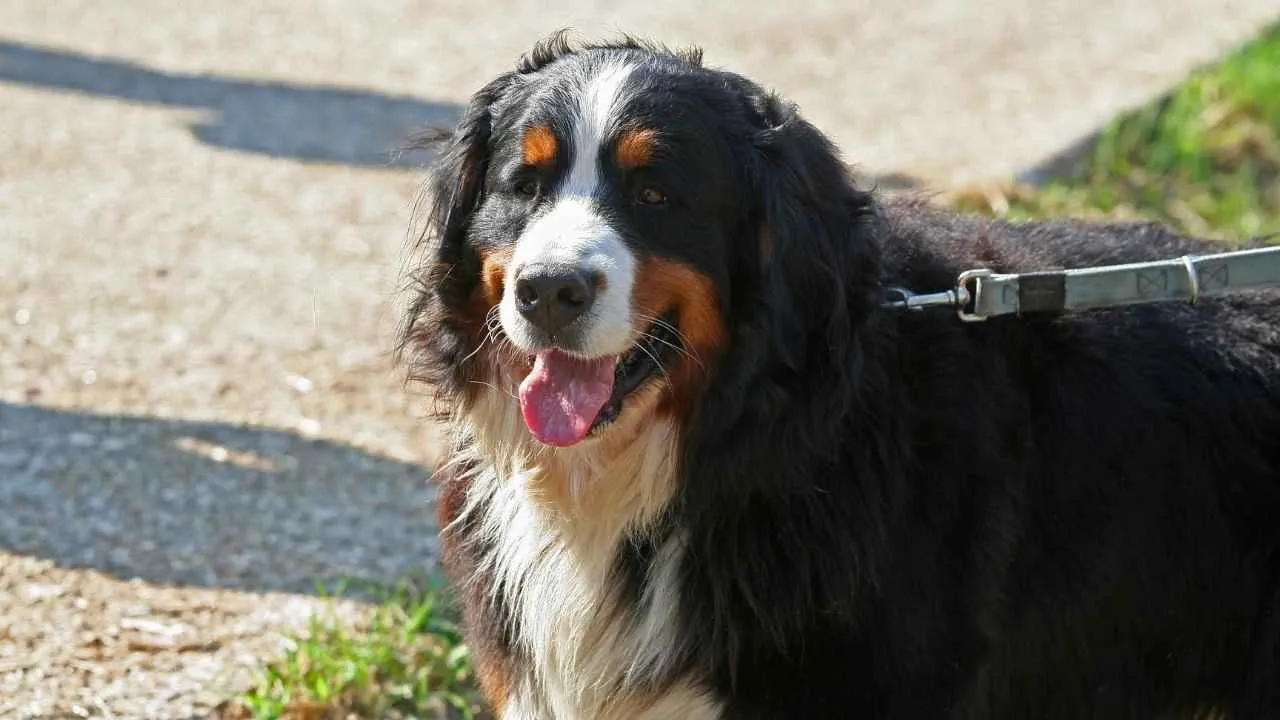
The Bernese Mountain Dog, affectionately known as the “Berner,” is a majestic working breed originally from the cold Swiss Alps. Descended from Roman mastiffs, this large and powerful dog was traditionally employed for herding cattle and pulling carts in alpine farms.
With males standing up to 27 inches tall and weighing between 80–115 pounds, Berners are not only strong but also incredibly gentle and affectionate with family members, especially children.
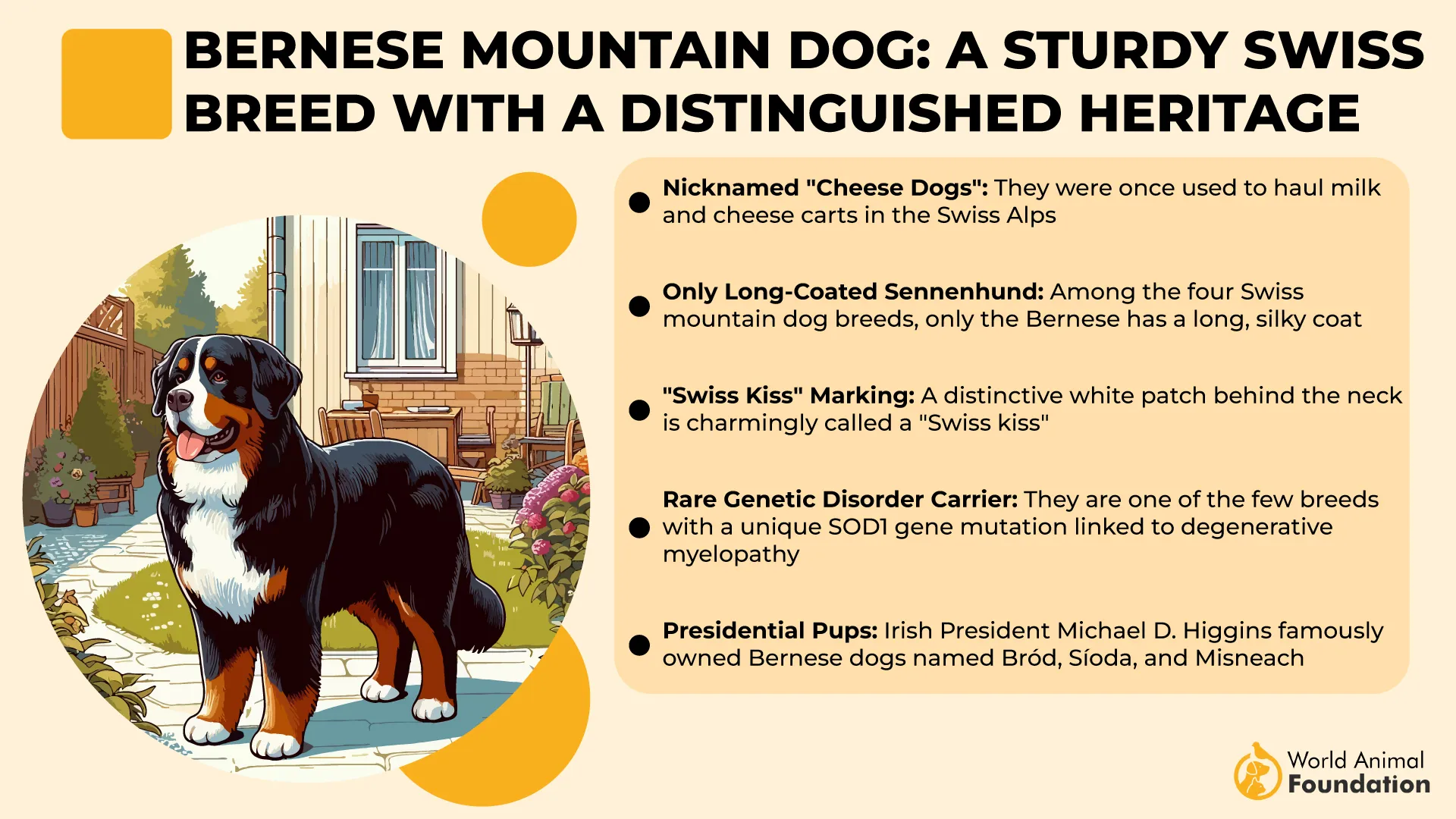
They sport a thick, tricolored coat of black, rust, and white with a silky texture and distinctive facial markings. Despite their imposing stature, Bernese Mountain Dogs are known for their calm demeanor and endearing loyalty.
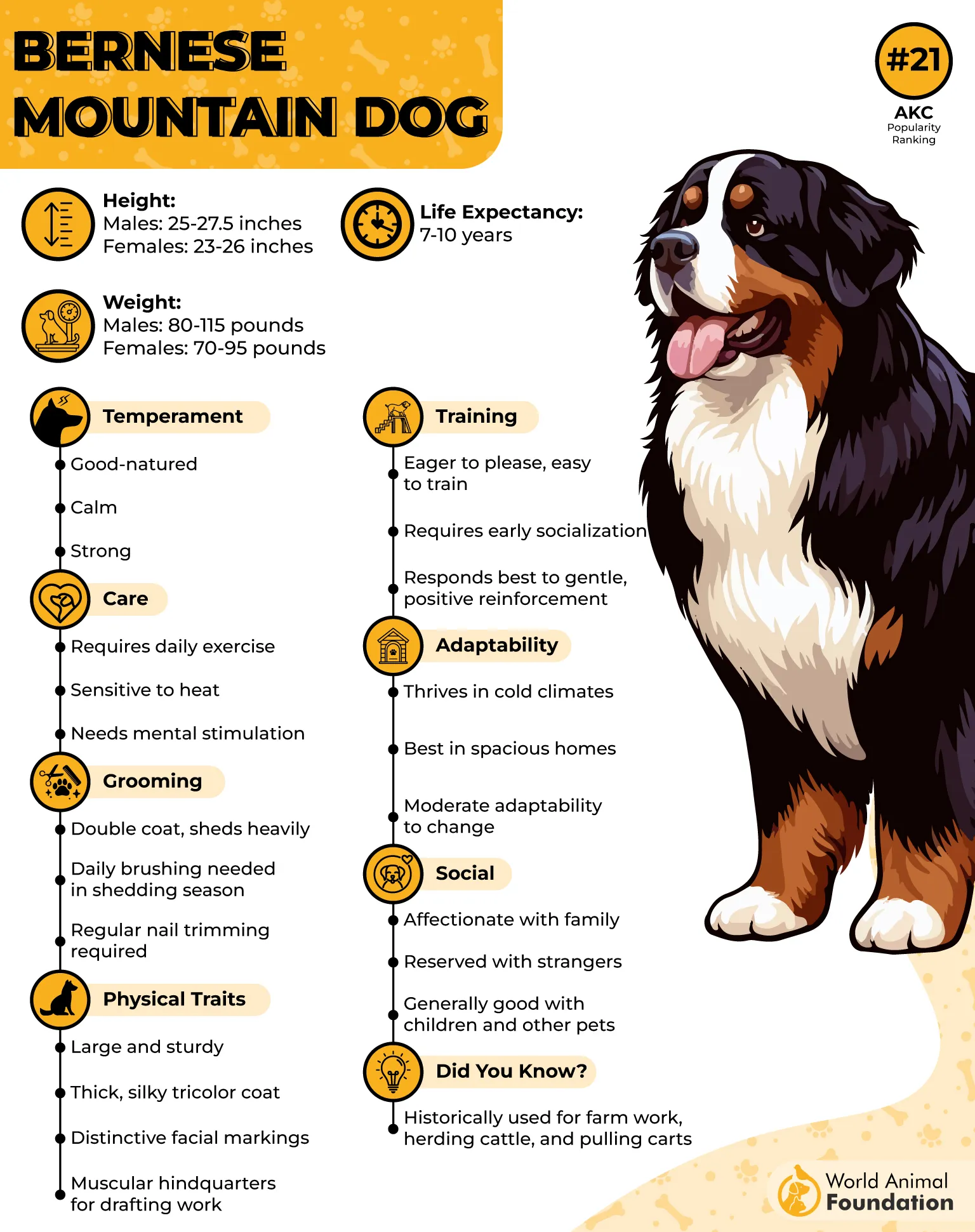
Exercise
While their energy level may be moderate, Bernese Mountain Dogs thrive on structured physical activity. They require at least one hour of exercise daily, which can be split between long walks, free time in a secure yard, or off-leash romps.
Their sturdy build and endurance make them excellent companions for cold-weather hikes and mountain trails. Pairing exercise with mental stimulation, such as training sessions or puzzle toy,s helps keep this breed well-balanced.
Fact: Bernese Mountain Dogs were originally bred for multitasking on Swiss farms, drafting, droving, and guarding.
6. Rhodesian Ridgeback
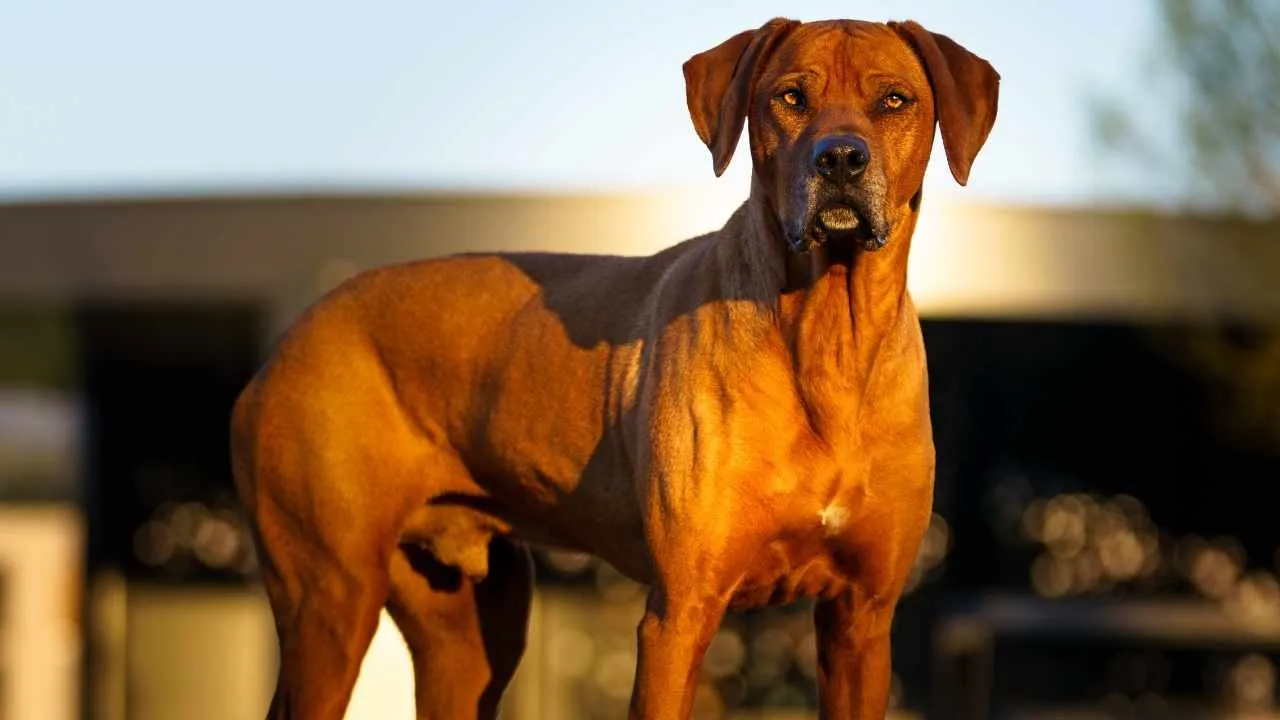
Originating in southern Africa, the Rhodesian Ridgeback, often referred to as the “African Lion Hound,” was bred to track and corner large game over rugged terrain. Known for the distinct ridge of backward-growing hair along its spine, this breed is dignified, powerful, and athletic.
Males typically stand between 25 to 27 inches tall and weigh around 85 pounds, while females are slightly smaller. They sport a sleek, wheaten-colored coat that comes in shades ranging from pale gold to reddish-brown, and their noses can be black or brown.
Though aloof with strangers, Ridgebacks form deep bonds with their families and exhibit a calm yet strong-willed temperament. They are part of the hound group and have a lifespan of 10 to 12 years.
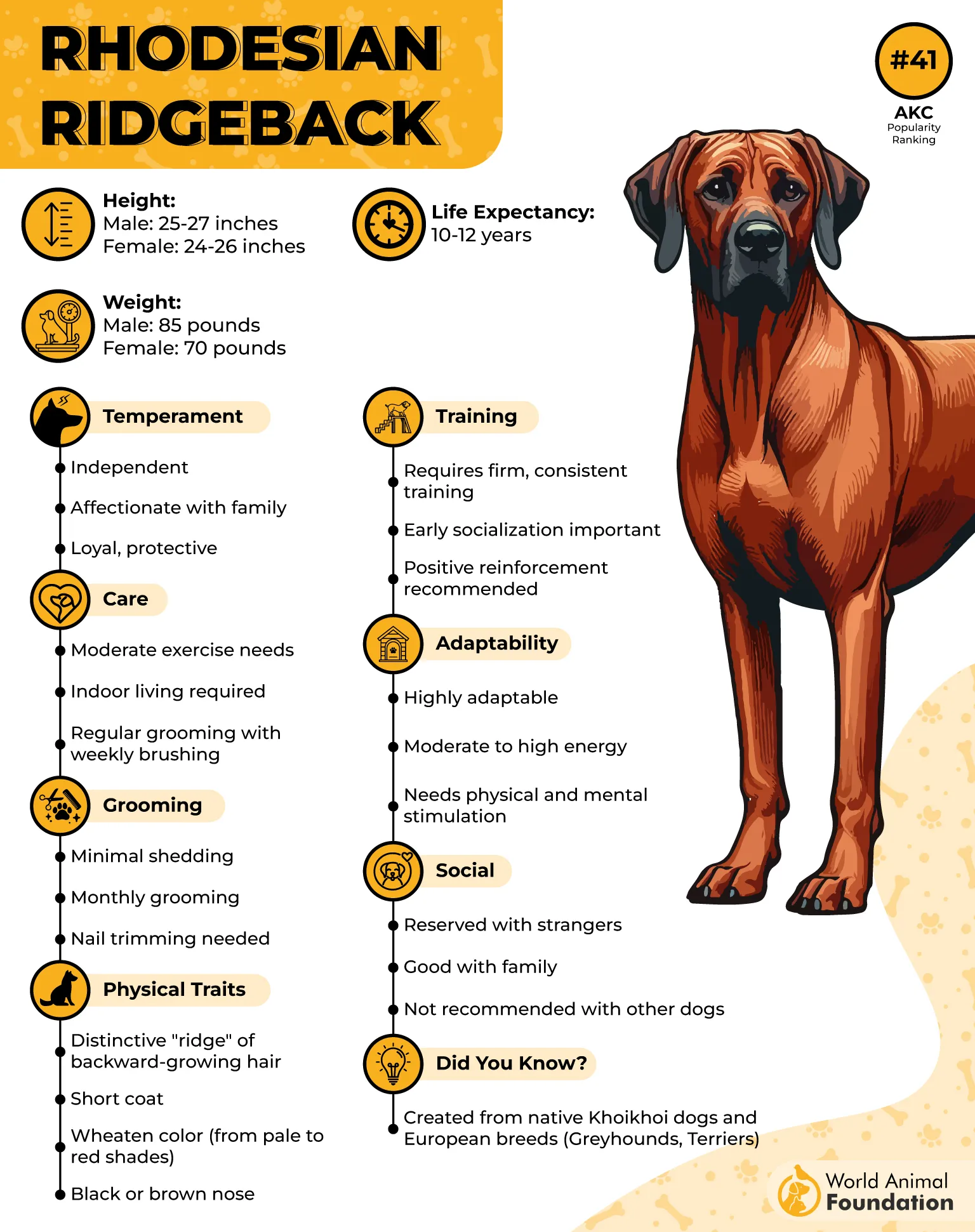
Exercise
Rhodesian Ridgebacks are high-endurance dogs that require at least two hours of daily activity. They thrive with long hikes, off-leash sprints in secure areas, and mentally engaging tasks.
Without sufficient stimulation, they can become restless. Due to their strong prey drive and intelligence, combining physical exercise with obedience tasks is essential to keep them well-balanced.
Fact: Despite their fearless reputation, Rhodesian Ridgebacks were bred to track and bay lions, not to kill them.
7. Siberian Husky
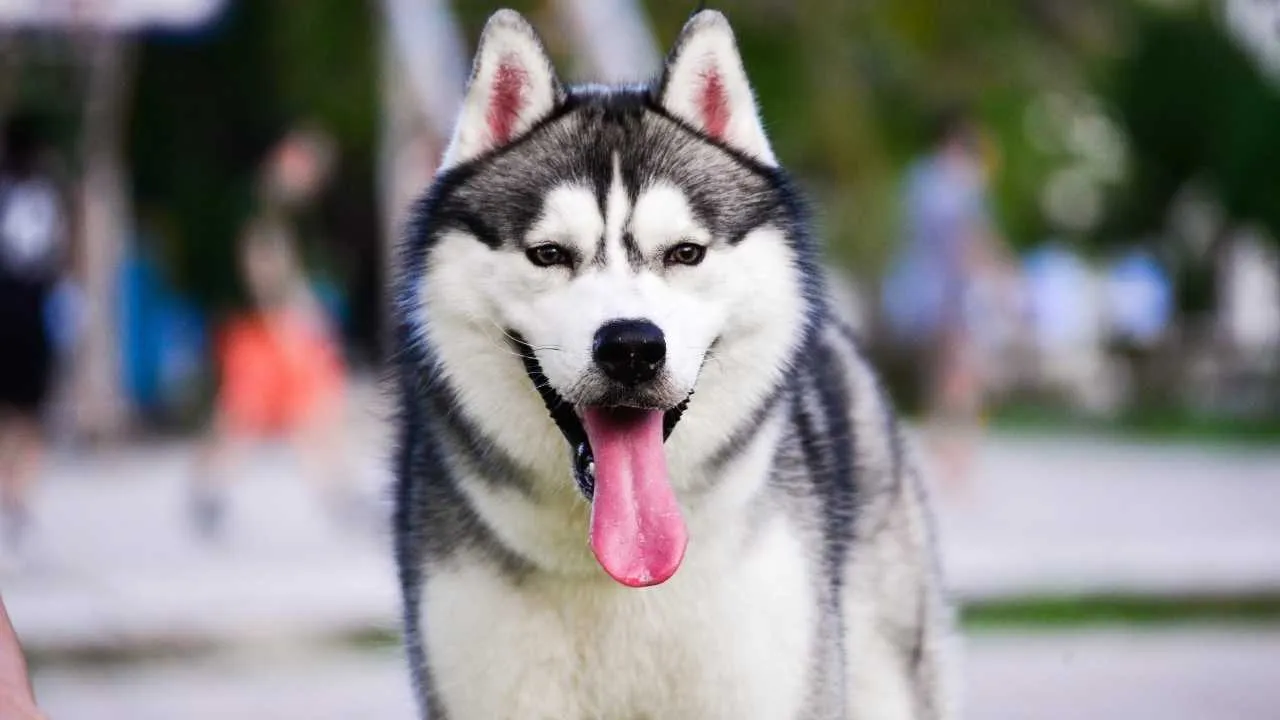
The Siberian Husky, a striking and athletic member of the Working Group, hails from Russia, where it was bred by the Chukchi people for sled-pulling across long, snowy distances.
With a dense double coat, upright ears, and expressive almond-shaped eyes that may be blue, brown, or even mismatched, this medium-sized dog stands about 20–23.5 inches tall and weighs between 35–60 pounds.
Siberians are admired for their dignified yet playful temperament and their innate love for adventure. Highly social and alert, they thrive in cold and wet conditions and are known to form strong bonds with their human and canine companions.
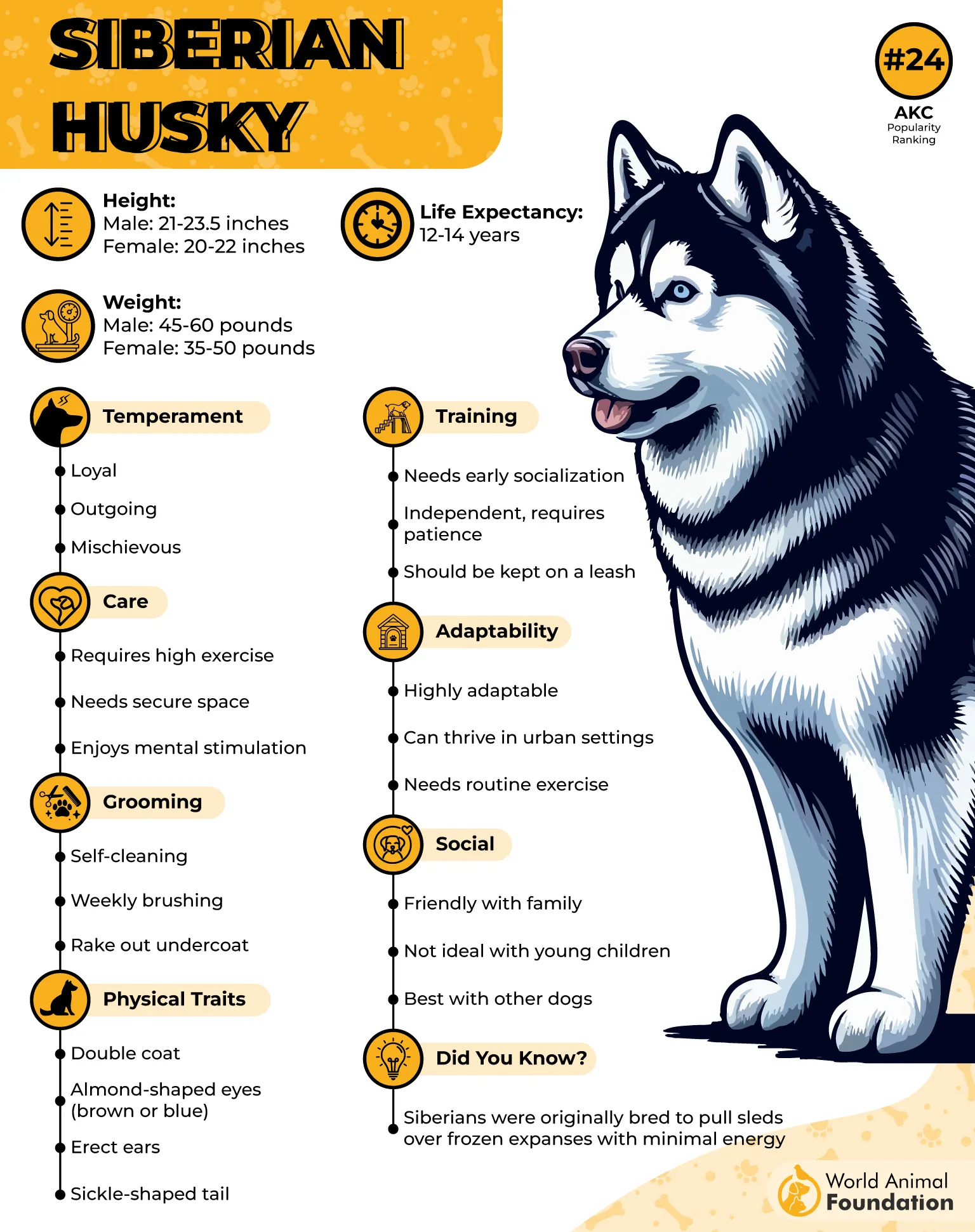
Exercise
Siberian Huskies are built for endurance and demand high levels of physical activity. At least two hours of vigorous daily exercise is essential to satisfy their mental and physical needs.
Their energetic disposition makes them ideal for long hikes or treks through snowy terrain. Be sure to provide secure open spaces for off-leash exploration, as their prey drive can kick in when spotting small animals.
Fun fact: Siberian Huskies were bred to travel over 100 miles in harsh Arctic conditions without fatigue, making them natural-born trail companions.
Conclusion
If you’re a nature lover looking for a hiking companion, choosing the right dog breed can elevate every adventure. From scaling steep trails to trotting along tranquil paths, the best hiking dogs combine stamina, agility, and a zest for the outdoors. Breeds like the Australian Shepherd, Border Collie, and Jack Russell Terrier are known for their boundless energy and intelligence, making them ideal for long, active treks. These breeds not only excel in endurance but also adapt well to varied terrains, giving them an edge on the trail.
Other dependable companions include the ever-popular Labrador Retriever, a healthy breed known for its loyalty and love for exploration, and the robust Alaskan Malamute, famed for its strength and snow-season stamina. While most dogs enjoy a good walk, some breeds like the Jack Russell thrive with consistent physical challenges. Whether you’re chasing waterfalls or herding fish by the riverbank, having the right hiking dog ensures your outdoor journeys are both exciting and enriching.


